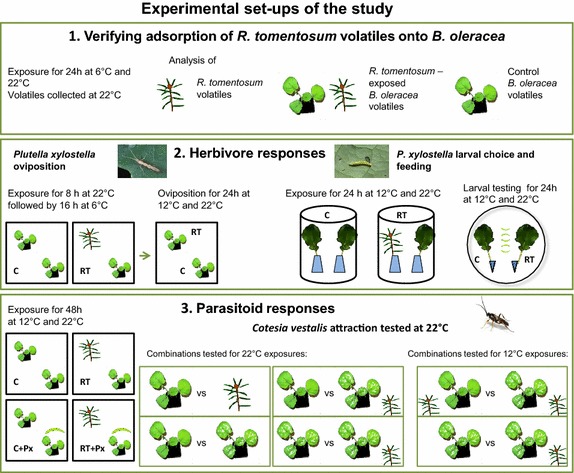Figure 1.

Experimental set-ups of the study. The study consisted of three parts testing plant, herbivore and parasitoid responses towards R. tomentosum (RT) exposure. Temperatures used in each part varied according to the response to be tested, and were representative of boreal environment variation in early summer night-time and day-time temperatures. In Part 1 (volatile analysis), a 6°C night-time minimum temperature versus day-time 22°C was used in order to reveal whether a temperature-dependent adsorption–desorption process of RT semivolatiles occurs on B. oleracea. Herbivore oviposition in Part 2 was compared at average day-time (22°C) versus average night-time (12°C) temperatures, with equal initial RT exposure (day-time 22°C followed by minimum night-time temperature of 6°C). Larval choice and feeding was tested at stabile 12 and 22°C temperatures to allow comparison for a 24 h period of feeding at night-time versus day-time temperatures along with temperature-representative RT exposures. In Part 3, the day-active parasitoids were tested at 22°C, with the prior RT exposure conducted at average day-time (22°C) and night-time (12°C) temperatures. Px = P. xylostella. Photos of P. xylostella and C. vestalis: Jarmo Holopainen.
